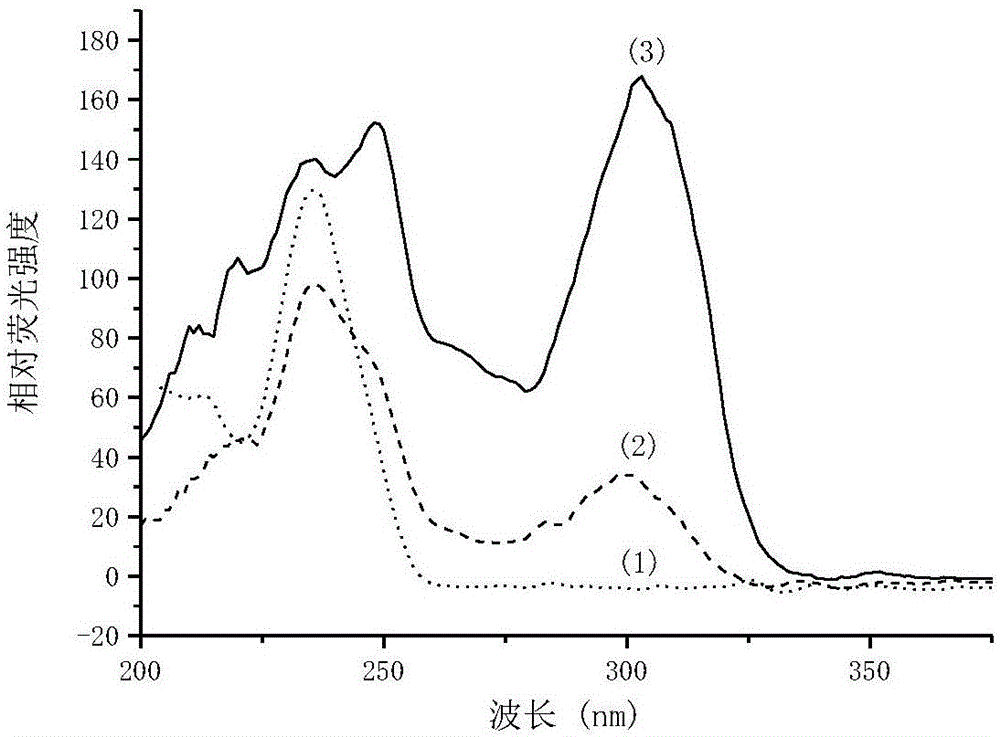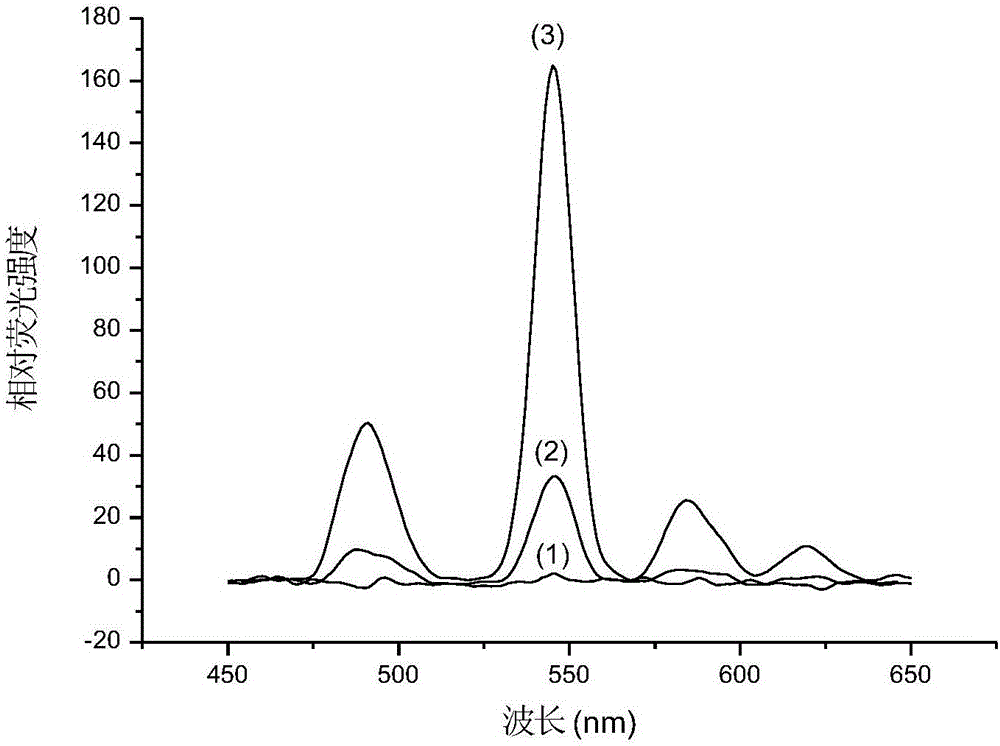Method for detecting adrenaline by metal-terbium fluorescent probe and use of method
An epinephrine and probe detection technology, used in fluorescence/phosphorescence, measurement devices, material analysis by optical means, etc., can solve the problems of poor stability modified electrodes, short electrode service life, etc., to achieve an effective detection method, improve stability performance, convenient for measuring the effect of operation
- Summary
- Abstract
- Description
- Claims
- Application Information
AI Technical Summary
Problems solved by technology
Method used
Image
Examples
Embodiment 1
[0035] Fluorescence detection of epinephrine ternary complex
[0036] 1. Solution preparation
[0037] (1) Tb(III)-EDTA stock solution (0.05mol / L): Accurately weigh 1.8612g Na 2 EDTA·2H 2 O in a 100mL beaker, add 2mL0.1mol / L NaOH, add water to dissolve, add 1.5966g TbCl 3 2H 2 O, after dissolving, transfer to a 100mL volumetric flask and dilute to the scale constant volume. When used, it was diluted step by step according to the required concentration.
[0038] (2) Epinephrine stock solution (1.0×10 -3 mol / L): Accurately weigh 0.0183g of epinephrine standard substance (Nanjing Drug Control Institute) into a 50mL beaker, add 5mL of 0.1mol / L HCl, add a small amount of water and 1mL of 4.0×10 -3 mol / LNa 2 SO 3 , and then transferred to a 100mL volumetric flask to dilute to the volume and store in the refrigerator. When used, it was diluted step by step according to the required concentration.
[0039] 2. Fluorescence Assay
[0040] Take three 10mL colorimetric tubes and ...
Embodiment 2
[0046] Optimization of Experimental Conditions, Establishment of Fluorescence Analysis Method for Determination of Epinephrine
[0047] (1) Solution acidity optimization
[0048] Solution acidity is the key factor for forming ternary complexes, and the optimization of solution acidity follows the steps below:
[0049] In nine 10mL colorimetric tubes, add 1mL 5.0×10 -5 mol / L epinephrine solution, 1mL 1.0×10 -2 mol / L Tb(III)-EDTA solution, a certain amount of Tris buffer solution and adjusted to the following required pH values with dilute hydrochloric acid and sodium hydroxide: 9, 9.5, 10, 10.5, 11, 11.5, 12, 12.5, 13, Finally, add 2 mL of 1.0×10 -3 mol / LCTAC, dilute to the mark; prepare complex solutions with pH values of 9, 9.5, 10, 10.5, 11, 11.5, 12, 12.5, and 13 different acidities, and then use a 1cm cuvette at an excitation wavelength of 302nm, the emission wavelength is 545nm to measure the fluorescence intensity of the system. The acidity corresponding to the ...
Embodiment 3
[0058] Selectivity of Epinephrine Assay
[0059] Add the solution in a 10mL colorimetric tube as follows: 1mL 5.0×10 -5 mol / L epinephrine standard solution, 1mL 1.0×10 -2 mol / L Tb(III)-EDTA solution, 1mL0.1mol / L NaOH solution, 2mL 1.0×10 -3 mol / LCTAC and a certain concentration of an interfering substance, diluted to the mark;
[0060] Shake well, and measure the relative fluorescence intensity after standing for 20 min. Compared with no interfering substances, determine whether the interfering substances interfere with the change of the fluorescence intensity of the system not exceeding ±5%. According to the above-mentioned experimental method, the interference of common metal ions and pharmaceutical excipients in the determination of epinephrine was experimentally analyzed, and the determination results are shown in Table 1.
[0061] The impact of table 1 interfering substances on the determination of epinephrine (C E =5.0×10 -6 mol / L)
[0062]
PUM
| Property | Measurement | Unit |
|---|---|---|
| Concentration | aaaaa | aaaaa |
| Concentration | aaaaa | aaaaa |
Abstract
Description
Claims
Application Information
 Login to View More
Login to View More - R&D
- Intellectual Property
- Life Sciences
- Materials
- Tech Scout
- Unparalleled Data Quality
- Higher Quality Content
- 60% Fewer Hallucinations
Browse by: Latest US Patents, China's latest patents, Technical Efficacy Thesaurus, Application Domain, Technology Topic, Popular Technical Reports.
© 2025 PatSnap. All rights reserved.Legal|Privacy policy|Modern Slavery Act Transparency Statement|Sitemap|About US| Contact US: help@patsnap.com



